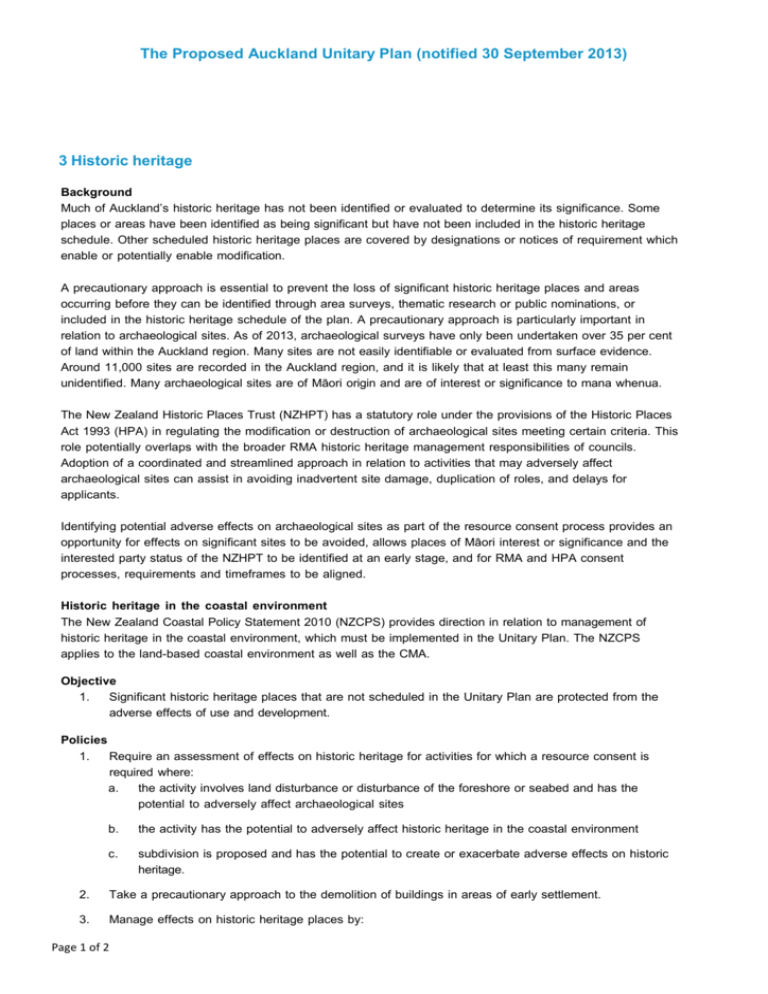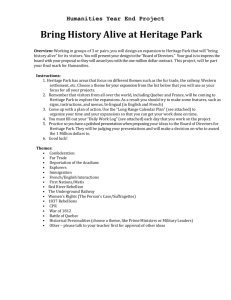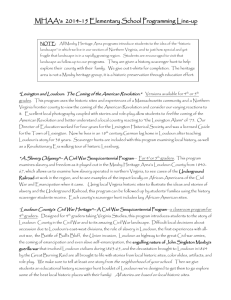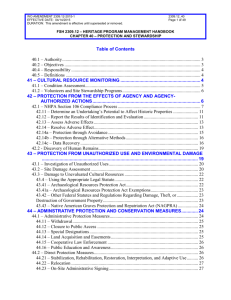The Proposed Auckland Unitary Plan
advertisement

The Proposed Auckland Unitary Plan (notified 30 September 2013) 3 Historic heritage Background Much of Auckland’s historic heritage has not been identified or evaluated to determine its significance. Some places or areas have been identified as being significant but have not been included in the historic heritage schedule. Other scheduled historic heritage places are covered by designations or notices of requirement which enable or potentially enable modification. A precautionary approach is essential to prevent the loss of significant historic heritage places and areas occurring before they can be identified through area surveys, thematic research or public nominations, or included in the historic heritage schedule of the plan. A precautionary approach is particularly important in relation to archaeological sites. As of 2013, archaeological surveys have only been undertaken over 35 per cent of land within the Auckland region. Many sites are not easily identifiable or evaluated from surface evidence. Around 11,000 sites are recorded in the Auckland region, and it is likely that at least this many remain unidentified. Many archaeological sites are of Māori origin and are of interest or significance to mana whenua. The New Zealand Historic Places Trust (NZHPT) has a statutory role under the provisions of the Historic Places Act 1993 (HPA) in regulating the modification or destruction of archaeological sites meeting certain criteria. This role potentially overlaps with the broader RMA historic heritage management responsibilities of councils. Adoption of a coordinated and streamlined approach in relation to activities that may adversely affect archaeological sites can assist in avoiding inadvertent site damage, duplication of roles, and delays for applicants. Identifying potential adverse effects on archaeological sites as part of the resource consent process provides an opportunity for effects on significant sites to be avoided, allows places of Māori interest or significance and the interested party status of the NZHPT to be identified at an early stage, and for RMA and HPA consent processes, requirements and timeframes to be aligned. Historic heritage in the coastal environment The New Zealand Coastal Policy Statement 2010 (NZCPS) provides direction in relation to management of historic heritage in the coastal environment, which must be implemented in the Unitary Plan. The NZCPS applies to the land-based coastal environment as well as the CMA. Objective 1. Significant historic heritage places that are not scheduled in the Unitary Plan are protected from the adverse effects of use and development. Policies 1. Require an assessment of effects on historic heritage for activities for which a resource consent is required where: a. the activity involves land disturbance or disturbance of the foreshore or seabed and has the potential to adversely affect archaeological sites b. the activity has the potential to adversely affect historic heritage in the coastal environment c. subdivision is proposed and has the potential to create or exacerbate adverse effects on historic heritage. 2. Take a precautionary approach to the demolition of buildings in areas of early settlement. 3. Manage effects on historic heritage places by: Page 1 of 2 The Proposed Auckland Unitary Plan (notified 30 September 2013) 4. a. assessing the significance of the historic heritage place in relation to the values in the RPS Historic Heritage section b. undertaking appropriate measures to avoid adverse effects on significant historic heritage. Where adverse effects cannot be avoided, they are remedied or mitigated c. requiring a protocol for the accidental discovery of archaeological sites to be followed. Encourage protection and stewardship of significant historic heritage places that meet the criteria for scheduling by enabling appropriate use, subdivision or development that would not otherwise be provided for in the plan, where: a. the long term future of the place, and where applicable, its continued use for a sympathetic purpose, is secured, and this would not otherwise necessarily be achieved b. the benefits to the wider community of enabling use, subdivision or development to secure the future conservation of a historic heritage place outweigh any adverse effects of not conforming to other sections of the plan c. the significant heritage values of the place or its setting are not on balance adversely affected d. detrimental fragmentation of management of the place is avoided e. it is necessary to resolve problems arising from the inherent needs of the place, rather than the circumstances of the owner, or the monetary value of the site f. g. Page 2 of 2 sufficient incentive mechanisms are not available from any other source it is demonstrated that the effects associated with enabling development have been minimised.











